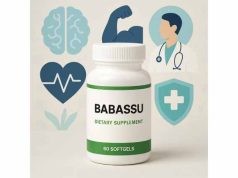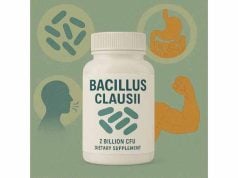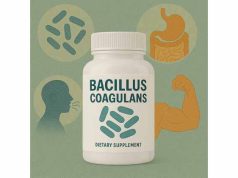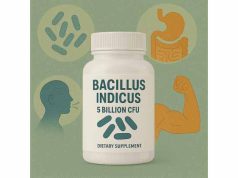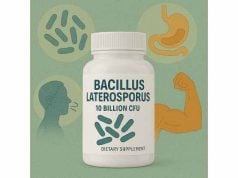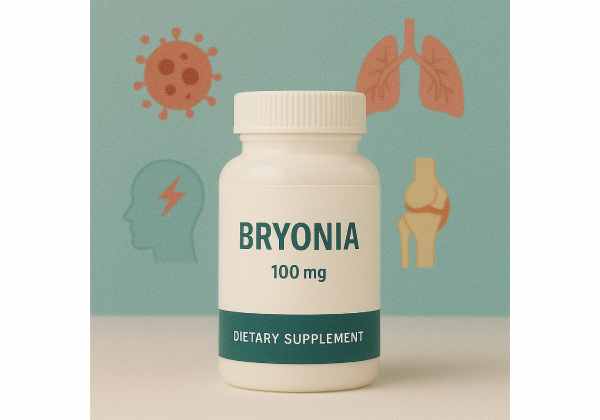
Bryonia, known in herbal and homeopathic circles for its traditional applications, is a plant-derived supplement that has sparked interest for its potential benefits in managing pain, inflammation, and respiratory discomfort. Sourced primarily from the root of Bryonia alba (white bryony), this botanical has been used for centuries across Europe and Asia, particularly for musculoskeletal ailments, dry coughs, and digestive complaints. In modern wellness practices, Bryonia continues to intrigue users seeking gentle, plant-based support for issues like joint stiffness, headaches, and minor colds. This comprehensive guide delves deep into how Bryonia works, its main benefits, usage guidelines, possible side effects, and the scientific mechanisms behind its therapeutic properties—helping you make informed, confident choices.
Key Takeaways
- Addresses joint pain and inflammation: Bryonia is valued for easing musculoskeletal aches, stiffness, and inflammatory discomfort.
- Soothes dry coughs and respiratory irritation: It is traditionally used to calm non-productive coughs and ease chest discomfort.
- Supports digestive balance: Bryonia may help with mild digestive issues like constipation or bloating.
- Potency and safety depend on dosage: Use with care; Bryonia’s raw root is toxic in large amounts and requires expert preparation.
- Consultation recommended: Always seek professional guidance before use, especially if you are pregnant, breastfeeding, or taking other medications.
Table of Contents
- Bryonia Plant Extract: Introduction and Traditional Applications
- Scientific Mechanisms: How Bryonia Impacts the Body
- Clinically Relevant Benefits and Evidence-Based Uses for Bryonia
- Bryonia Supplement Safety: Side Effects, Interactions, and Special Precautions
- Bryonia Dosage: Forms, Preparation, and Administration Guidance
- Frequently Asked Questions About Bryonia
Bryonia Plant Extract: Introduction and Traditional Applications
Bryonia is a perennial, climbing plant that belongs to the gourd family (Cucurbitaceae) and is best known for its thick, fleshy root. There are several species of Bryonia, with Bryonia alba (white bryony) and Bryonia dioica (red bryony) being the most recognized for their medicinal use. Originating from central and southern Europe as well as parts of western Asia, Bryonia has played a significant role in folk medicine dating back to antiquity.
The plant itself grows rapidly, with heart-shaped leaves, tendrils for climbing, and small greenish-white flowers that yield round, often poisonous berries. The root, which resembles a turnip, is the part most commonly used for therapeutic purposes. Historically, Bryonia root was prepared in dried, powdered, or tincture form, and was a staple in traditional herbal medicine cabinets for a variety of ailments.
Traditional Uses and Historical Significance
Bryonia’s roots have a rich legacy in European herbalism, where they were employed for conditions involving pain, inflammation, and congestion. Healers used Bryonia primarily for:
- Joint and muscle pain: Due to its purported anti-inflammatory and analgesic effects, Bryonia was applied to treat rheumatism, arthritis, and various musculoskeletal discomforts.
- Respiratory complaints: In cases of persistent dry coughs, chest pain, or bronchitis, Bryonia preparations were used to soothe mucous membranes and ease breathing.
- Digestive disturbances: The root was sometimes given for sluggish digestion, bloating, constipation, or to stimulate bile flow.
- Fever and colds: Bryonia was included in traditional fever remedies, often combined with other botanicals to manage symptoms of influenza or viral illnesses.
- Homeopathic practice: Bryonia alba remains a central remedy in homeopathy, especially for conditions where pain is aggravated by movement and relieved by rest.
Preparation and Administration in Tradition
Traditionally, only small, expertly prepared doses of Bryonia root were considered safe, as the raw plant contains toxic compounds. Tinctures (alcohol-based extracts), decoctions, and ointments were made under careful supervision, and external applications were favored to minimize systemic toxicity. Homeopathic Bryonia is extremely diluted, considered safe for most users, and differs significantly from raw or herbal preparations.
Chemical Constituents of Bryonia Root
The main bioactive compounds in Bryonia root include:
- Cucurbitacins: Bitter triterpenoids that contribute to Bryonia’s medicinal properties and potential toxicity.
- Bryonolic acid: Studied for its anti-inflammatory, antioxidant, and immunomodulatory effects.
- Alkaloids, glycosides, and resinous substances: Minor compounds believed to interact synergistically to affect inflammation and pain.
The bitterness and potency of Bryonia root have given rise to cautionary tales and strict dosing traditions among herbalists. When handled and dosed correctly, it was considered a valuable, if potent, natural medicine.
Modern Applications and Current Use
Today, Bryonia is most commonly encountered in the following forms:
- Homeopathic remedies: Widely available for coughs, headaches, and joint pains.
- Herbal supplements and tinctures: Used in select integrative or herbal medicine settings—always with expert guidance due to the risk of toxicity.
- Topical balms or poultices: For localized muscle or joint discomfort.
Its ongoing popularity in homeopathy, as well as renewed interest in herbal anti-inflammatories, has led to continued research on its safety, preparation, and best uses.
Key Points
- Bryonia’s medicinal reputation spans centuries, particularly for pain and respiratory issues.
- Raw Bryonia root is toxic; only properly prepared extracts or homeopathic dilutions should be used.
- Its complex chemical makeup offers both potential benefit and risk, underscoring the importance of quality, dosing, and professional advice.
Understanding Bryonia’s roots—literally and figuratively—sets the stage for a deeper exploration of how it works at the biochemical and clinical level.
Scientific Mechanisms: How Bryonia Impacts the Body
The therapeutic actions of Bryonia are a subject of ongoing scientific interest, particularly in light of its traditional reputation for easing pain, inflammation, and respiratory discomfort. To appreciate its potential, let’s examine the key biological mechanisms behind Bryonia’s effects and how its active compounds interact with the body.
Active Compounds in Bryonia
- Cucurbitacins: These are bitter, highly bioactive molecules found abundantly in Bryonia root. Cucurbitacins (especially cucurbitacin B, D, and E) are noted for their anti-inflammatory, antitumor, and immunomodulatory actions. However, they are also responsible for the plant’s toxicity at high doses.
- Bryonolic acid: This triterpenoid is studied for its capacity to modulate inflammation, scavenge free radicals, and possibly support immune defense.
- Polysaccharides, alkaloids, and saponins: Additional minor constituents may contribute to Bryonia’s overall bioactivity, particularly in terms of soothing irritated tissues and promoting digestive balance.
How Bryonia Affects the Body: Key Pathways
- Anti-inflammatory Action Bryonia’s best-documented mechanism is its effect on inflammatory pathways. Research suggests that its cucurbitacins and bryonolic acid may inhibit pro-inflammatory mediators (such as cytokines and prostaglandins), which are responsible for swelling, pain, and redness in injured tissues. This is likely why Bryonia is traditionally used for joint and muscle pain.
- Analgesic (Pain-Relieving) Effects By dampening inflammation and modulating pain signals, Bryonia may help reduce the sensation of aches and stiffness, especially in the context of arthritis, sprains, or overuse injuries. Topical or homeopathic preparations are sometimes chosen for these symptoms.
- Respiratory Soothing Properties Bryonia is reputed for its ability to calm dry, irritating coughs and alleviate chest congestion. The plant’s expectorant action is thought to help thin and loosen mucus, making it easier to expel, while its anti-inflammatory compounds soothe inflamed mucous membranes in the airways.
- Digestive Support and Bile Stimulation Traditional herbalists used Bryonia to stimulate sluggish digestion and relieve constipation. Its bitter compounds likely trigger digestive juices and promote bile flow, supporting overall gut motility. However, improper dosing can cause gastrointestinal upset, underscoring the importance of proper preparation.
- Modulation of Immune Responses Some early research points to Bryonia’s potential to balance immune function. Bryonolic acid, in particular, has shown immunomodulatory effects, potentially supporting the body’s natural defense against infections and inflammatory processes.
- Antioxidant Effects Bryonia’s root contains several antioxidant molecules that may neutralize free radicals and support cellular health. This antioxidant activity can complement its anti-inflammatory effects and contribute to tissue repair.
Absorption, Metabolism, and Elimination
The active compounds in Bryonia are primarily absorbed through the digestive tract when taken orally. They are metabolized in the liver and excreted via the kidneys. Topical use limits systemic absorption, reducing the risk of toxicity.
Risks and Limitations
- Toxicity: Bryonia’s cucurbitacins are potent; excessive intake can cause severe gastrointestinal distress, dehydration, and potentially serious complications. This is why precise preparation and expert oversight are critical.
- Homeopathic Safety: Homeopathic Bryonia remedies are diluted to the point where almost no molecules of the original extract remain, drastically reducing the risk of toxicity and making them safe for most individuals.
Summary of Mechanism
Bryonia’s impact on the body is largely due to its anti-inflammatory, analgesic, expectorant, and mild digestive-stimulating actions. These effects explain its use in conditions marked by pain, inflammation, dry cough, and digestive sluggishness.
Understanding these mechanisms helps illuminate why Bryonia remains popular among both herbal and homeopathic practitioners. In the next section, we’ll focus on the most relevant, evidence-backed benefits and when Bryonia may be most helpful.
Clinically Relevant Benefits and Evidence-Based Uses for Bryonia
Bryonia’s enduring popularity stems from both centuries-old wisdom and a growing body of scientific inquiry. While not a “miracle cure,” Bryonia offers tangible benefits for those seeking gentle support for a variety of common complaints—when used properly and with professional guidance. Here are the main evidence-based benefits and therapeutic uses:
1. Relief of Joint Pain, Arthritis, and Inflammation
Bryonia’s historical fame is closely tied to its use in treating joint stiffness, muscle pain, and arthritic symptoms. The anti-inflammatory and analgesic actions of its cucurbitacins and triterpenoids make it a favored remedy for:
- Rheumatoid arthritis: Homeopathic Bryonia is often suggested for acute joint pain that worsens with movement and improves with rest.
- Osteoarthritis and sprains: Herbal preparations, used externally or in tightly controlled doses, can offer soothing relief from swelling and stiffness.
- Sports injuries: Topical Bryonia-based ointments may help reduce inflammation after strains or overuse.
2. Soothing Persistent Dry Coughs and Respiratory Discomfort
Bryonia is a traditional go-to for coughs described as dry, hacking, and painful. Its ability to calm irritated respiratory membranes, thin mucus, and alleviate chest pain makes it valuable for:
- Bronchitis or tracheitis: Especially when coughing is aggravated by movement or deep breathing.
- Post-viral coughs: As a gentle respiratory soother in the recovery phase of colds or flu.
3. Easing Digestive Discomfort and Constipation
While less common today, Bryonia’s bitter principles can stimulate digestive secretions, promote bile flow, and gently encourage regularity. Historically, small doses were given for:
- Bloating and sluggish digestion: When linked to insufficient bile or digestive secretions.
- Constipation: As a short-term remedy, not for chronic use.
4. Managing Headaches and Migraines
In homeopathy, Bryonia is a leading remedy for headaches described as splitting, bursting, or aggravated by the slightest movement. Users often report improvement when resting in a quiet, dark room.
5. Adjunct Support for Fever and Acute Viral Illnesses
Traditional practitioners sometimes included Bryonia in herbal blends or homeopathic regimens for feverish illnesses, citing its ability to support recovery, reduce body aches, and manage dehydration.
6. Topical Use for Localized Pain or Swelling
Bryonia’s anti-inflammatory properties have been harnessed in poultices, balms, or ointments for:
- Muscle strains
- Bruising
- Joint or ligament injuries
Who May Benefit Most from Bryonia?
- Adults with acute joint or muscle pain aggravated by motion
- Individuals struggling with persistent, dry, non-productive coughs
- Those seeking complementary support for headaches or mild digestive discomfort
- Users who prefer homeopathic or low-dose botanical preparations
Cautions and Considerations
- Bryonia’s benefits are highly dependent on proper dose and preparation.
- Raw root or large herbal doses can be toxic—always use reputable, professional sources.
- Best used as part of a holistic health plan, not as a sole therapy for chronic or serious illness.
Emerging Research
While much of the evidence for Bryonia comes from historical practice and small-scale studies, ongoing research into cucurbitacins and bryonolic acid continues to shed light on its anti-inflammatory and immune-modulating potential.
In summary, Bryonia offers natural, targeted support for pain, inflammation, dry coughs, and digestive sluggishness when used thoughtfully and in appropriate preparations.
Bryonia Supplement Safety: Side Effects, Interactions, and Special Precautions
When considering Bryonia as a supplement or remedy, safety is paramount—especially because this plant’s roots contain potent bioactive compounds that can be both therapeutic and toxic depending on the dose and preparation. In this section, you’ll find a comprehensive review of Bryonia’s tolerability, potential side effects, interactions with medications, and the critical precautions for special populations.
General Safety Profile
Bryonia is most commonly encountered in homeopathic remedies, where it is highly diluted and considered safe for most people. However, herbal or raw preparations require expert oversight. The root contains high levels of cucurbitacins and other glycosides, which are responsible for both its beneficial and potentially harmful effects.
- Homeopathic Bryonia: Due to extreme dilutions, these products are generally well tolerated and associated with very few adverse effects.
- Herbal Bryonia Extracts: Require strict dosage control and are not recommended for unsupervised use. Professional herbalists or integrative physicians may use Bryonia tinctures or extracts at low doses for specific conditions, carefully weighing the risks and benefits.
Common Side Effects
When taken inappropriately or in excessive amounts, Bryonia can cause a range of side effects, many of which are dose-dependent. The most commonly reported adverse reactions include:
- Digestive upset: Nausea, vomiting, abdominal cramps, and diarrhea are the most frequently encountered side effects of higher doses.
- Thirst and dryness: Bryonia is famous in traditional use for causing dry mouth and intense thirst, especially in homeopathic descriptions.
- Dizziness or headache: Some users report mild neurological effects, especially if sensitive to bitter compounds.
Severe or Rare Adverse Reactions
Because raw Bryonia root is toxic, accidental or intentional ingestion of high doses can result in dangerous symptoms:
- Severe gastrointestinal irritation: Persistent vomiting and diarrhea can quickly lead to dehydration.
- Kidney or liver stress: High doses overtax detoxification organs, leading to potential injury.
- Cardiac or neurological symptoms: Rarely, toxic doses can cause confusion, irregular heart rhythms, or seizures.
Special Precautions and Contraindications
Bryonia’s safety profile means it’s not suitable for everyone. Take special care if you belong to any of the following groups:
- Pregnant or breastfeeding women: Bryonia has traditionally been considered unsafe in pregnancy due to possible uterine stimulation and lack of sufficient research. Avoid all but homeopathic preparations, and only with professional supervision.
- Children and infants: Not recommended for children except in carefully selected homeopathic doses under the guidance of a pediatric practitioner.
- People with chronic illness: Individuals with liver, kidney, or gastrointestinal diseases should steer clear of Bryonia except under direct professional care.
- Allergy risk: Though uncommon, those allergic to plants in the gourd family (Cucurbitaceae) should use caution.
Drug Interactions
Bryonia’s bitter principles and active triterpenoids can potentially interact with several types of medications:
- Diuretics and laxatives: Bryonia may potentiate the effects of other diuretics or laxatives, increasing the risk of dehydration or electrolyte imbalances.
- Anticoagulants (blood thinners): There’s some concern that Bryonia may mildly alter blood clotting, especially if combined with warfarin or similar drugs.
- Sedatives and CNS depressants: In rare cases, large doses could enhance the effects of sedatives, though this is primarily a risk with unregulated herbal forms.
- Other anti-inflammatories: Combining Bryonia with NSAIDs or herbal anti-inflammatories could increase gastrointestinal risks.
Safe Use Guidelines
- Consult a healthcare provider: Always seek expert advice before starting any form of Bryonia, especially if you have medical conditions or are taking medication.
- Use only reputable products: Purchase homeopathic Bryonia or herbal extracts from trusted brands that adhere to rigorous quality control standards.
- Never use raw Bryonia root at home: It is highly toxic and should not be self-prepared or self-administered.
- Monitor for side effects: Stop use and seek medical attention if you experience persistent gastrointestinal symptoms, neurological changes, or allergic reactions.
Summary
Bryonia is a powerful plant with a narrow therapeutic window. Homeopathic forms are broadly safe, while herbal extracts should be reserved for professional care. Responsible use, awareness of drug interactions, and proper product selection are essential to ensuring a safe and beneficial experience with Bryonia.
Bryonia Dosage: Forms, Preparation, and Administration Guidance
Determining the right dosage and form of Bryonia is key to achieving its benefits while minimizing risk. Because the raw root is toxic and traditional herbal preparations can be potent, it’s critical to follow professional guidelines and product instructions.
Available Forms of Bryonia
- Homeopathic Remedies (Bryonia alba):
- Potency: Most common are 6C, 30C, and 200C dilutions, where the original substance is diluted well beyond the point of toxicity.
- Use: Typically taken as small pellets under the tongue or dissolved in water.
- Dosage: Varies based on symptom intensity and practitioner recommendation. Generally, 3–5 pellets every 4–6 hours for acute symptoms; frequency decreases as symptoms improve.
- Herbal Tinctures and Extracts:
- Potency: Alcohol- or water-based extracts standardized to specific concentrations.
- Use: Only under professional supervision due to toxicity risk.
- Dosage: Usually a few drops to a maximum of 1 mL, diluted in water, one to three times daily for adults—never to be self-administered.
- Topical Preparations (Balms, Creams, Ointments):
- Use: For local pain or inflammation, such as sore joints or bruises.
- Dosage: Apply a thin layer to affected area up to 2–3 times daily; avoid broken skin.
- Dried Root (Rare):
- Use: Sometimes found in specialty herbal apothecaries; not recommended for general use.
Best Practices for Bryonia Supplementation
- Follow professional advice: Dosage, frequency, and form should be tailored to individual needs by a trained provider.
- Start with homeopathic forms: These are safest for self-care, especially for respiratory or joint symptoms.
- Never exceed recommended amounts: Toxicity can occur with even moderate overdoses of herbal Bryonia.
- Combine with supportive care: Use Bryonia alongside rest, hydration, and other supportive therapies for best results.
- Monitor response: If symptoms persist, worsen, or new side effects appear, discontinue use and consult your practitioner.
When and How to Take Bryonia
- For acute symptoms (homeopathy): Take at the earliest onset of symptoms, such as a developing cough or muscle ache.
- For joint pain: Use topical forms directly on affected areas, or homeopathic remedies as instructed.
- For respiratory complaints: Homeopathic Bryonia may be taken several times daily during the acute phase, then tapered as improvement occurs.
Who Should Avoid Bryonia Supplementation?
- Anyone with a history of severe allergies to herbal products.
- Individuals with advanced liver or kidney disease, unless under strict supervision.
- Pregnant or breastfeeding women, except when advised by a professional using homeopathic doses.
- Children under 12, unless specifically recommended by a pediatric-trained homeopath.
Signs of Overdose or Toxicity
- Severe stomach cramps, vomiting, diarrhea
- Intense thirst and dehydration
- Dizziness, weakness, or confusion
- Heart palpitations
If any of these symptoms occur, discontinue use immediately and seek medical attention.
Quality and Sourcing
- Choose GMP-certified brands: Look for companies that adhere to good manufacturing practices.
- Request batch testing: Reputable companies offer third-party verification of purity and potency.
- Avoid “wildcrafted” or self-harvested roots: These may vary widely in strength and safety.
Summary
Safe and effective use of Bryonia requires a nuanced approach—focusing on homeopathic forms for most self-care, reserving herbal extracts for professional oversight, and always respecting dosage limits and individual tolerability.
Frequently Asked Questions About Bryonia
What is Bryonia most commonly used for in supplements and remedies?
Bryonia is primarily used to address joint and muscle pain, relieve dry coughs, and manage minor digestive complaints, especially in homeopathic and traditional herbal medicine.
Is Bryonia safe to use every day?
Homeopathic Bryonia is generally safe for short-term, as-needed use. Prolonged daily use of herbal Bryonia extracts is not recommended due to potential toxicity. Always follow professional guidance.
Can Bryonia treat arthritis or rheumatism?
Bryonia is traditionally used for arthritis symptoms, particularly acute pain worsened by movement. It can complement conventional care but should not replace standard treatments for chronic arthritis.
Are there any drug interactions with Bryonia supplements?
Bryonia may interact with diuretics, blood thinners, and other herbal anti-inflammatories. Consult a healthcare provider before combining Bryonia with other medications or supplements.
How do I choose a high-quality Bryonia supplement?
Look for reputable brands that provide clear dosage instructions, batch testing, and third-party quality certifications. Prefer homeopathic forms for self-care and avoid products with vague labeling.
What are the potential side effects of Bryonia?
Common side effects include nausea, vomiting, dry mouth, and dizziness at higher doses. Homeopathic Bryonia rarely causes side effects due to extreme dilution.
Can I use Bryonia during pregnancy or breastfeeding?
Bryonia is not recommended during pregnancy or breastfeeding, except for carefully selected homeopathic preparations under professional supervision.
Disclaimer:
The information provided in this article is for educational purposes only and should not be considered a substitute for professional medical advice, diagnosis, or treatment. Always consult your healthcare provider before starting any supplement or making changes to your health routine, especially if you have pre-existing medical conditions or are taking medication.
If you found this guide helpful, please consider sharing it on Facebook, X (formerly Twitter), or your favorite platform, and follow us on social media for more evidence-based wellness tips. Your support helps us continue creating reliable, high-quality health content—thank you!


